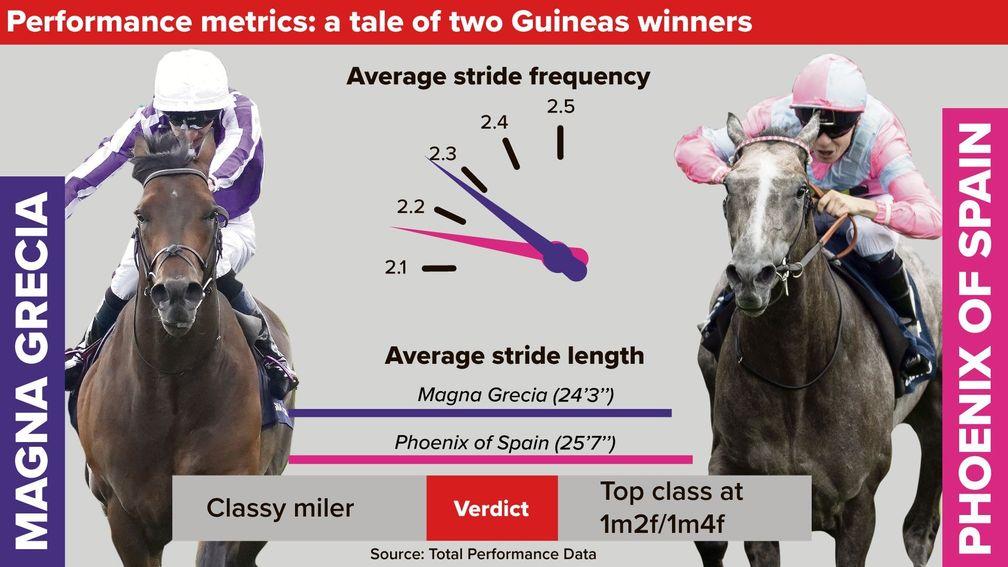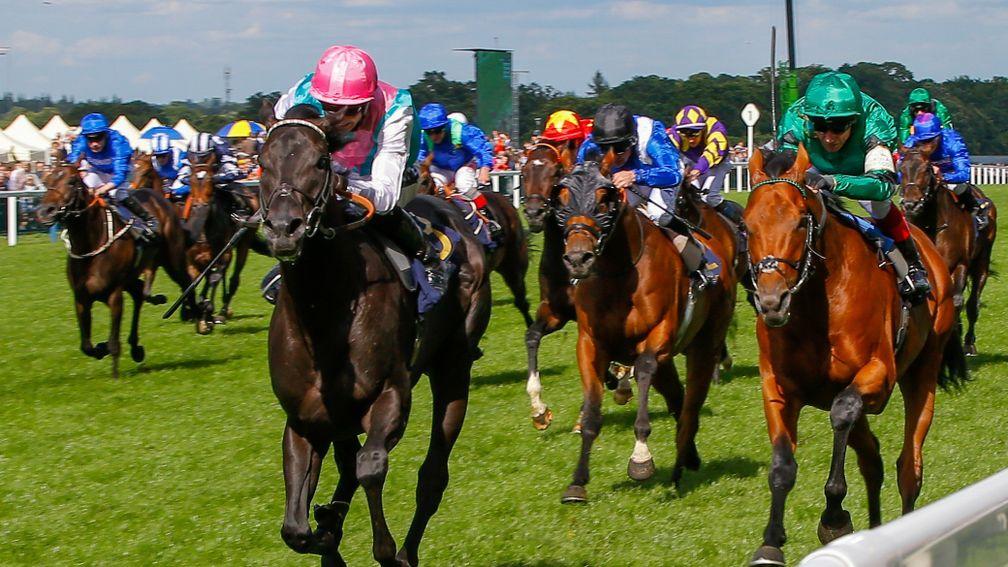The boot fits for Magna Grecia but Phoenix Of Spain is in need of a change
Due to the injury he suffered in the Irish 2,000 Guineas when last seen in May, this has been something of a lost season for Magna Grecia, for all he's bagged a Classic win and presumably ensured his place at stud.
Before his return in the Queen Elizabeth II Stakes, we are left wondering: what might he have achieved in the meantime? Might he be running in the Champion Stakes on Saturday instead? Maybe he'd have run in the Arc? After all, his dam was campaigned as an Oaks filly and she was sired by Galileo.

Striding data suggests that Magna Grecia is exactly where he should be, which is over a mile. His average cadence has been measured at 2.29 strides per second, which is more or less bang on what would be expected of a horse that will prove best around a mile.
His average stride length, incidentally, has been taken as 24ft 3in. That's commensurate with him being a good horse, for all it doesn't immediately scream 'Classic winner'.
He strikes a real contrast with Phoenix Of Spain, who won the aforementioned Irish 2,000 Guineas. On stride patterns, Phoenix Of Spain should be running over significantly further, perhaps as far as a mile and a half (his pedigree, in fairness, does contain plenty who stayed ten furlongs).
His stride length also hints that he could be devastating if upped in trip. His average stride through a race has been measured as 25ft 7in, which is firmly in the realm of immediately identifiable top-class performers.
Things may happen too quickly in the QEII for Phoenix Of Spain, as they have done on his last couple of starts, but it is to be hoped that he comes back at four and is at least given a chance over middle-distances.

On the topic of monster strides, Biometric draws the eye in the closing Balmoral Handicap. Before he won the Britannia Stakes at Royal Ascot on his first run at a mile, he recorded a stride length of 25ft 10in at Lingfield over six furlongs.
As mentioned before, stride lengths increase going downhill and Lingfield's six-furlong course fits the bill for much of the way. Even when normalised for the course, Biometric's stride was 21 inches longer than average, which is a real advantage extrapolated over the course of a race in which, over a mile, horses will take in excess of 200 strides.
He also strode at 2.33 strides per second, which is much more in tune with a mile than six furlongs. He has only had three chances at a mile up to now, including the Britannia, and has clear excuses for the other two. There is every chance he can bounce back and show his class back at Ascot.
All data courtesy of Total Performance Data, whose tracking covers more than 20 courses in the UK and North America
Published on 18 October 2019inPreviews
Last updated 19:27, 18 October 2019
- 2.50 Ayr: Dan Skelton and Paul Nicholls go head-to-head for crucial prize-money in battle to become champion trainer
- 2.25 Newmarket: Next Passenger please! Digging for a future star among 12 unraced three-year-olds in the Wood Ditton
- 3.45 Newbury: 'You never know what he's going to be like' - enigmatic Not So Sleepy switches to the Flat
- 6.50 Limerick: 'He'll like the ground and is in good form' - Gordon Elliott's Favori De Champdou the class act in Grade 3 chase
- Smart View selected an 18-1 debut winner on Wednesday - but who comes out best in the Wood Ditton at Newmarket?
- 2.50 Ayr: Dan Skelton and Paul Nicholls go head-to-head for crucial prize-money in battle to become champion trainer
- 2.25 Newmarket: Next Passenger please! Digging for a future star among 12 unraced three-year-olds in the Wood Ditton
- 3.45 Newbury: 'You never know what he's going to be like' - enigmatic Not So Sleepy switches to the Flat
- 6.50 Limerick: 'He'll like the ground and is in good form' - Gordon Elliott's Favori De Champdou the class act in Grade 3 chase
- Smart View selected an 18-1 debut winner on Wednesday - but who comes out best in the Wood Ditton at Newmarket?